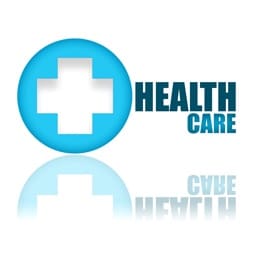In order to get the most out of the services offered by your health insurance plan, it’s important to be a proactive and informed consumer. Here are some tips for maximizing your health insurance benefits without draining your wallet.
Take advantage of preventative services
If you joined your health plan on or after Sept. 23, 2010, the Affordable Care Act allows you to get many preventive care services for free from a network provider, without a co-payment or co-insurance. Depending on your age, you might have access to free blood pressure, diabetes, and cholesterol tests; mammograms, colonoscopies, and other cancer screenings; flu and pneumonia shots; and well-child visits from newborn to age 21.
If you were enrolled in your plan before Sept. 23, 2010, check with your insurance company; your plan may still offer some of the same preventive care benefits.
Go generic or order medications by mail
You probably are already aware that generic drugs cost less than brand-name drugs, but you might be surprised at just how much money you can save by using them. When your doctor writes you a prescription, ask if it’s OK to get the generic drug.
Also, check to see if your insurance company offers a mail-order program. You can usually order a 90-day supply of the medication at a reduced cost. Brand-name drugs can fall into different tiers, with Tier 4 specialty medications requiring higher co-pays or co-insurance. Check with your insurance company to see in what tier your medication falls.
Stay in network
Use a doctor who is in your health plan’s network; going out of network can result in much higher costs and co-pays. Your insurance company has negotiated better rates with in-network doctors and health centers. But don’t just check that your physician is in network—make sure hospitals, medical supply companies, home health providers, and imaging centers are part of your network too.
Track your out-of-pocket costs
Especially when buying individual insurance, consumers may be tempted to enroll in a high-deductible plan. Under these plans, you pay a low monthly premium, but then you pay for your medical expenses out of pocket until you reach a high deductible limit that can be thousands of dollars. This type of plan can work if your medical expenses are low, but unexpected expenses can rack up the costs. Look beyond the premium and tally up your out-of-pocket costs to see if you are in the right plan, advises Mark Cowell, manager of consumer marketing for GoHealth, an online and offline resource that helps individuals to find health insurance plans.
Plan around your deductible
If your insurance deductible is $500, that means you must pay the first $500 in medical expenses out of pocket before your plan pays for any covered services. If you think you will be incurring high fees for upcoming medical procedures, try to schedule your procedures within the same deductible year so you only have to reach your deductible once. Also, keep in mind that some plans have a separate deductible for in-network providers and out-of-network providers.
Save your receipts
Save your healthcare receipts for tax time, as you might be able to deduct some expenses from your taxes. If you are self-employed, you may be able to deduct your health insurance premiums. If your healthcare expenses exceed 7.5 percent (or 10 percent after December 31, 2012) of your adjusted gross income, you may be able to deduct a long list of qualified health expenses ranging from nursing home services to acupuncture.
Find the freebies
Many employer-sponsored health plans are laced with extra bonuses to keep you healthy, thus lowering long-term healthcare costs. Some plans offer free programs, such as access to a health coach online or over the phone, a nurse’s line that you can call for non-urgent medical advice, smoking-cessation programs, weight-loss programs, and even discounts on gym memberships.
Check costs
Be knowledgeable about your healthcare bills. Check to make sure the bills are correct and that you haven’t been wrongly billed for services you didn’t receive. Also, compare prices of medical services; using a more expensive provider can hit your wallet harder than you’d think. Online sites like Simplee.com offer a useful dashboard that helps you make sense of your medical bills, track medical expenses, and manage healthcare costs.
Enroll in a health savings account
Many companies offer health savings accounts (HSAs). HSA money is deducted from your paycheck pre-tax and set aside for your healthcare expenses. The money in this fund is tax-free. You can use it for doctor’s visits, lab work, and even hearing aids and eyeglasses. The unused balance in your HSA can roll over, so you won’t lose your money if you don’t spend it all within the year.
Give your health plan a checkup
Examine your plan yearly to make sure it is still right for you. Add up your expenses throughout the year to make sure your plan has the correct deductible level for your family. Your plan may also need to be adjusted if you’ve had any significant life changes, like pregnancy, the birth of a child, marriage, or divorce. Tools like GoHealth, HealthCompare, or eHealthInsurance can help you compare different plans, benefits, and costs.
A Chicago-based writer and editor, Eve Becker writes about personal finance, health and other topics. She is a former managing editor of Tribune Media Services.







